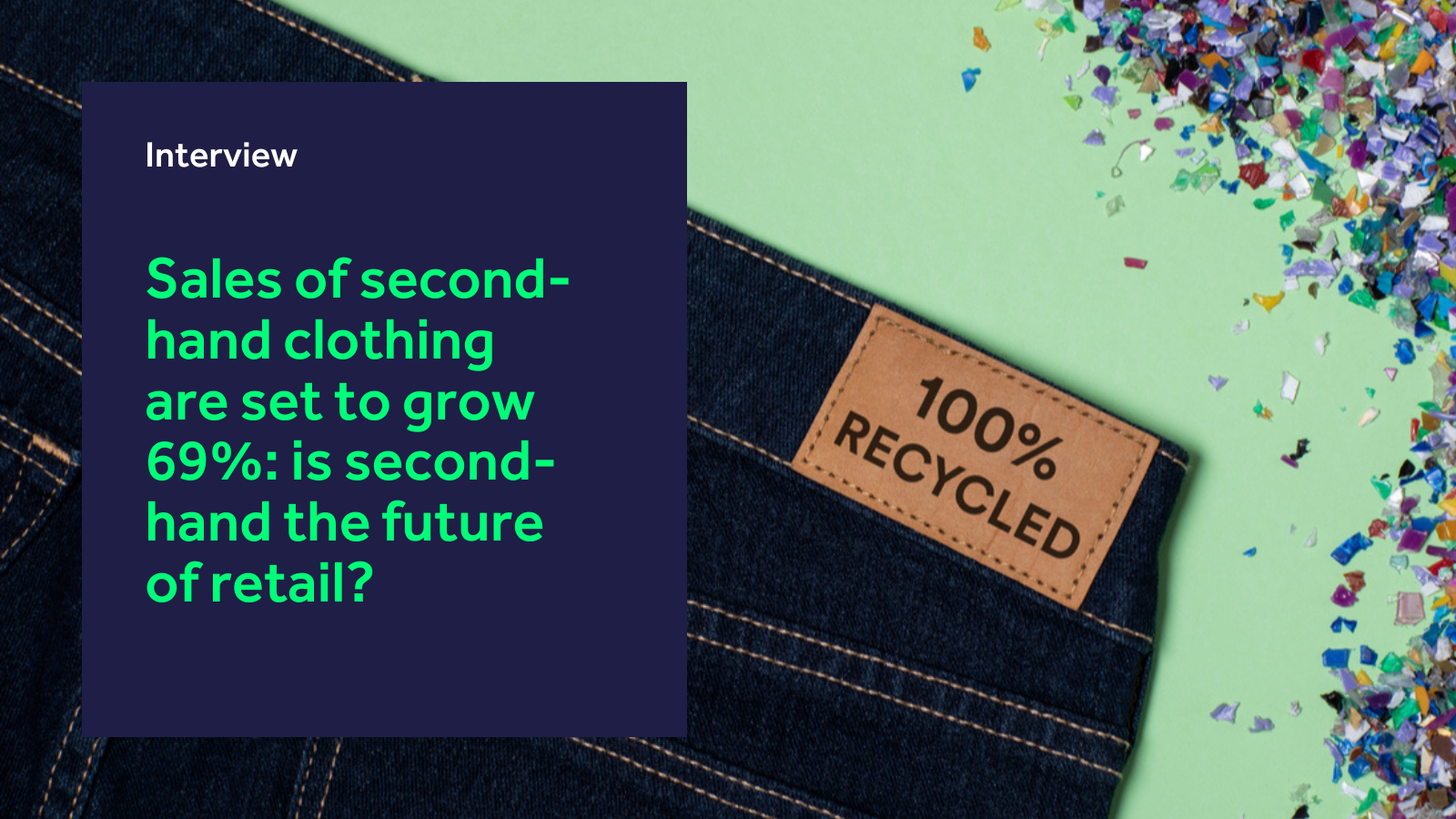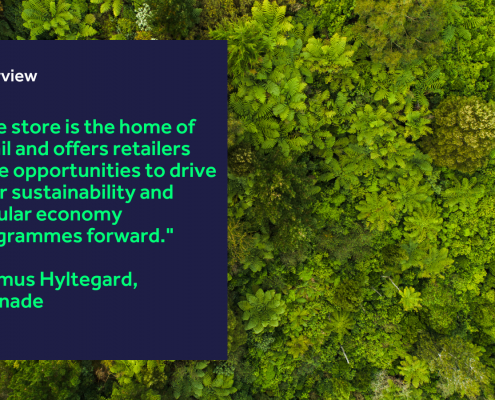The fashion industry accounts for around 10% of global greenhouse gas emissions. However, environmental conscientiousness has seen fast fashion taking a backseat, while sales of second-hand clothing are set to grow 69% between 2019 and 2021. Dr. Kerli Kant Hvass, founder of circular economy consultancy, Revaluate, explains why…
Do you think consumers are ready and motivated to buy more second-hand goods?
If we look at today’s consumers, I think the stigma around second-hand goods is slowly disappearing. Brands like H&M and Tommy Hilfiger engaging with take-back, repair, reuse initiatives has helped create a much more glamourous and professional image for second-hand shopping.
Retailers think the consumer is king, but it’s a symbiotic movement. Some customers are ready now, and some will become ready when the solutions are there, and once they become more normalised and accessible. If retailers bring these solutions to the market in an attractive and convenient way, then they can serve the people who are demanding a more sustainable, circular economy while attracting the attention of those who are not there yet.
How do you think our throw away mentality has altered our perception towards the value of goods?
It’s very difficult to convince the consumer to appreciate a product and give it a longer life if it’s too low quality to be repaired or reused. A lot of fast fashion is made to be used a few times and thrown away. We have to change our perception to consider that the things we buy have long-term value, and of course, the retailers have to provide and sell products that can hold up to that view.
I often ask myself who these cheap, low quality products make happy. The factory workers who can’t get a living wage because of the brands who squeeze margins in this race to the bottom? The consumers who buy them? Perhaps they have a moment of happiness, but then after one wash it’s out of shape. If they donate it, the charity organisations are not happy. They can’t resell these low quality clothes. The only happy moment is for the retailer who sells it on volume.
With every change there are losers and winners, and I don’t think low quality fast fashion is going to continue to be profitable now that governments are calling for a sustainable and circular economy.
Why do you think there’s been such an uptick in second-hand fashion this past year?
The internet has played a huge part in championing transparency. People are becoming much more aware of the damage caused by growing amounts of waste, and the unethical and unsustainable production processes that are at fault. They want to do something about it, and now there’s technology to support online selling platforms like Depop and Vestiaire Collective. It’s more convenient to buy and sell second-hand, and for a lot of people, it’s a badge of honour because it’s in line with their values.
Over the last year there’s been a shift in the public psyche. I think lockdown has taught a lot of us that we can easily live without shopping every weekend. It has slowed down our lives and given us this perspective to really think about our values, what makes us really happy and our future.
How can retail make sustainability more accessible to people on minimum wage?
It’s true that very often sustainable brands are associated with higher cost and are targeted at more privileged consumers. However, I don’t think it’s always the case that customers in minimum wage jobs can’t reconcile their principles with their spending habits. Second-hand and recommerce give customers access to a really diverse range of products for a lower price. When I’ve been talking to brands who engage with recommerce, one of the main benefits they get is being able to reach wider segments.
In second-hand shops, it can take longer to find second-hand clothes because of the diversity and time can be a major issue for shoppers as well. But if second-hand solutions continue to become more accessible, they could be a much better option for those with less time and less money to feed into that sustainable economy. It’s just a matter of bringing that level of convenience and positive customer experience to the second-hand sector.
 https://www.k3btg.com/wp-content/uploads/2023/10/LkSG-blog-header.png
900
1600
Jordan Heal
https://www.k3btg.com/wp-content/uploads/2022/03/K3_Master_Colour_RGB.svg
Jordan Heal2023-10-26 12:07:412024-03-19 14:05:10Everything you need to know about the German Supply Chain Due Diligence Act
https://www.k3btg.com/wp-content/uploads/2023/10/LkSG-blog-header.png
900
1600
Jordan Heal
https://www.k3btg.com/wp-content/uploads/2022/03/K3_Master_Colour_RGB.svg
Jordan Heal2023-10-26 12:07:412024-03-19 14:05:10Everything you need to know about the German Supply Chain Due Diligence Act

